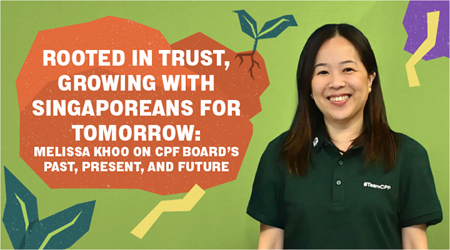The Workplaces Championing Hybrid Work

During COVID-19, remote work allowed public officers to be more productive by reducing travel time. Workplaces became more accessible and inclusive for those with caregiving needs and persons with disabilities.
But the prolonged telecommuting over more than two years also made it more challenging to foster connections among officers, collaborate among teams, and build a culture as an organisation.
Post-COVID, public agencies are encouraged to design a new future workplace experience that combines the strengths of remote and onsite work. In doing so, public agencies should work to enhance the organisation’s effectiveness, such as having more responsive modes of collaboration.
Flexible work arrangements should also contribute to broader national goals such as reducing the peak hour load on public transport, and allowing employees with diverse needs (such as PwDs and caretakers) to remain engaged at work.
Work-from-office days should be centred around fruitful collaboration, social connections and care for employees’ wellbeing.
Collaboration: Improving In-person Workspaces
At DBS, a cross-regional Future of Work Taskforce formed in 2020 found that over 80% of the bank’s 29,000-strong workforce could work remotely in a seamless way. All employees now have the flexibility to work remotely up to 40% of the time.
Although the bank’s employees in Singapore reported via surveys that they remained productive while working remotely, staying engaged and connected with colleagues was challenging. This included having informal discussions and cross-team ideation, which they found difficult to do remotely.
DBS will be launching a 5,000-square ft Living Lab that blends the best of physical and virtual workspace configurations in its Singapore headquarters.
Having built activity-based workspaces known as JoySpaces since 2016, DBS will continue to reconfigure its workspaces to enable greater collaboration and ideation.
DBS CEO Piyush Gupta said: “We are prepared to radically transform the way we work by… implementing a permanent hybrid work model, flexible work arrangements, and deploying more agile squads while creating workspaces that will help to supercharge ideation and collaboration."
Connection: Tools for Socialising and Virtual Work
At Open Government Products (OGP), the tech team behind products such as FormSG, ParkingSG, and the COVID-19 vaccination appointment system, flexible work arrangements aim to recreate the office experience at home, and have seamless transitions from virtual to in-person meetings.
OGP does this by using off-the-shelf tech tools, such as the collaborative Google software suite and messaging platform Slack. These platforms allow for easy collaboration over documents, integrations for information to flow easily between systems (e.g., Google Calendars linking with HR and messaging systems on teammates’ availability), and the automation of reminders, announcements and tasks.

Social chat channels, extensions and automated bots can also be used on Slack to make staying connected within and across teams fun and easy.
In OGP, all meetings are hybrid meetings. Using Google Calendar, officers can see which other teams are having similar virtual meet-ups and join in to listen or ask questions – just like chats that happen in the office.
On Slack, an OGP-built UpdateBot app runs weekly on Fridays. Officers simply reply with a one-line update on what they have accomplished or worked on in the past week, and other people can start threads to learn more or collaborate on workstreams.
OGP also collects data on team interactions via Donut, a Slack app which randomly pairs each OGP officer with someone else every two weeks, and asks them to connect over a meal or coffee. Detailed team reports are published regularly to encourage greater participation and team cohesion.
To check on how officers are feeling, OGP uses the OfficeVibe platform for pulse checks. This takes just a minute every two weeks, supplementing employee engagement surveys that require more time to create and complete. Over time, the trends in team engagement can be analysed from the data collected.
Tools more prevalent in the Public Service such as SG-Teams and OneDrive also allow for easy file-sharing and real-time collaboration across teams and agencies, whether officers are working onsite or remotely.
Tips for Efficient Onsite Work and Telecommuting
- Keep all meetings short, regardless of whether officers are meeting in the office or joining virtually from home.
- Invite only essential attendees for meetings, whether in person or virtually. Consider allowing officers to take calls from home, especially if their physical presence is not needed.
- Outside of the office, choose a distraction-free work environment that has a reliable internet connection. For tips on setting up conducive workspaces at home, check out the Working from Home: Conducive, Safe and Secure guide (intranet link).
Care: Global Days-off and Increased Flexibility
At Google, employees can now spend approximately three days in the office and two days “wherever they work best”, as described in a note by CEO Sundar Pichai. In-office time will be focused on collaboration, and decided by each team’s product areas and functions.
In 2021, Googlers received extra benefits such as Carer’s Leave, a work-from-home allowance, the ability to work from anywhere, and extra “reset days”. These reset days, which is when the whole company globally takes a day off, began in 2021 to help employees recharge during the pandemic.
Like several Singapore public agencies, Google also has focus hours to limit internal meetings during times when people need to get cracking on projects.

For office spaces, a Real Estate and Workplaces Services team has been reimagining a hybrid workplace to foster collaboration. The ideas include new multi-purpose offices and private workspaces, and developing advanced video technology for better communication and collaboration between employees in the office and those joining virtually.
Caring for Officers’ Wellbeing
Remote work can pose challenges for the mental wellbeing of officers due to reduced social connections and support. To help officers care for their wellbeing in a hybrid workplace, agencies can:
- Provide training, resources, and tools to help officers improve their self-care and personal organisation skills
- Have supervisors model self-care, project management and positive supervision in a hybrid workplace (e.g., by sharing words/moments of gratitude, celebrating successes, and respecting personal non-work time)
- Normalise help-seeking behaviours by officers and supervisors, and encourage officers to use shared wellbeing resources, such as mindline at work and the Whole-of-Government Wellbeing Microsite (intranet link)
What are some flexible work arrangements at your agency? If you’d like to highlight good practices in your team or elsewhere, share your story via email at OurFutureWorkplace@psd.gov.sg
More Useful Resources
For conducting virtual meetings:
For tips on better communication while working remotely
- Gitlab’s Remote Playbook has best practices for remote work
For updates on how the Public Service is rolling out flexible work arrangements
- Future Workplace microsite (intranet link)

To get more stories like this, subscribe to the Challenge newsletter or follow the Challenge Telegram channel.
- POSTED ON
Jun 2, 2022
- TEXT BY
Siti Maziah Masramli
- ILLUSTRATION BY
Lei Ng








